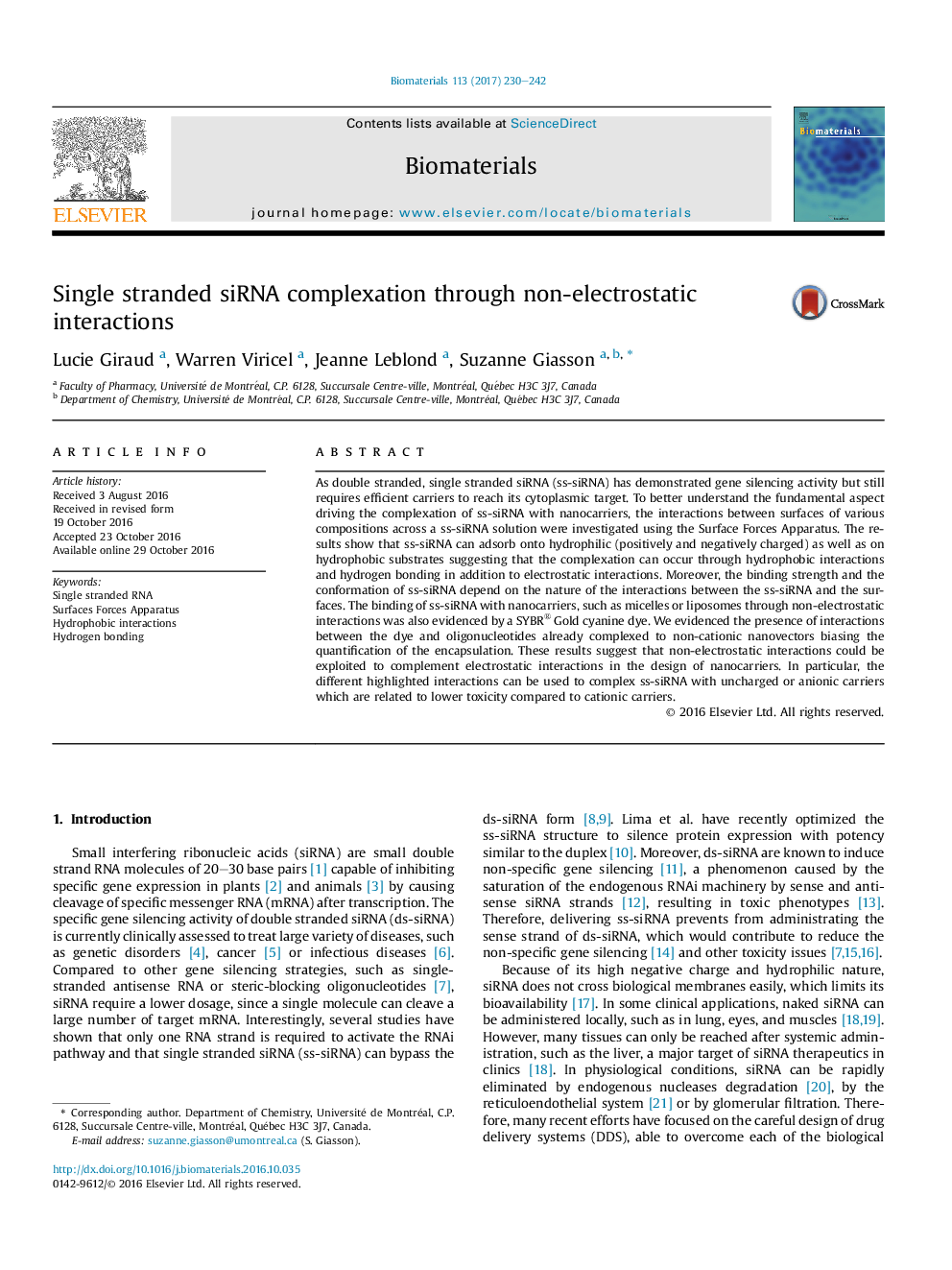| کد مقاله | کد نشریه | سال انتشار | مقاله انگلیسی | نسخه تمام متن |
|---|---|---|---|---|
| 6451060 | 1416154 | 2017 | 13 صفحه PDF | دانلود رایگان |

- Single stranded siRNA (ss-siRNA) can adsorb on hydrophilic and hydrophobic surfaces.
- ss-siRNA can self-assemble on surfaces through non-electrostatic interactions.
- The ss-siRNA conformation depends on the nature of the interactions with the surface.
- ss-siRNA can be loaded into uncharged and negatively charged nanocarriers.
- Quantification of ss-siRNA loading can be biased with unconventional nanocarriers.
As double stranded, single stranded siRNA (ss-siRNA) has demonstrated gene silencing activity but still requires efficient carriers to reach its cytoplasmic target. To better understand the fundamental aspect driving the complexation of ss-siRNA with nanocarriers, the interactions between surfaces of various compositions across a ss-siRNA solution were investigated using the Surface Forces Apparatus. The results show that ss-siRNA can adsorb onto hydrophilic (positively and negatively charged) as well as on hydrophobic substrates suggesting that the complexation can occur through hydrophobic interactions and hydrogen bonding in addition to electrostatic interactions. Moreover, the binding strength and the conformation of ss-siRNA depend on the nature of the interactions between the ss-siRNA and the surfaces. The binding of ss-siRNA with nanocarriers, such as micelles or liposomes through non-electrostatic interactions was also evidenced by a SYBR® Gold cyanine dye. We evidenced the presence of interactions between the dye and oligonucleotides already complexed to non-cationic nanovectors biasing the quantification of the encapsulation. These results suggest that non-electrostatic interactions could be exploited to complement electrostatic interactions in the design of nanocarriers. In particular, the different highlighted interactions can be used to complex ss-siRNA with uncharged or anionic carriers which are related to lower toxicity compared to cationic carriers.
198
Journal: Biomaterials - Volume 113, January 2017, Pages 230-242